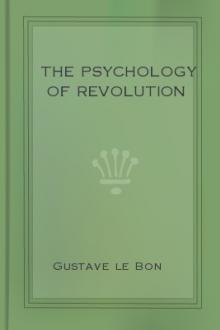Short Fiction, Poul Anderson [simple e reader .TXT] 📗

- Author: Poul Anderson
Book online «Short Fiction, Poul Anderson [simple e reader .TXT] 📗». Author Poul Anderson
“The original mineral was found on Venus, in the Gorbu-vashtar country,” explained Karen Marek. “Here’s a sample.” She gave him a lump of rough, dense material which glittered in hard rainbow points of light. “It was just a curiosity at first, till somebody thought to test its electrical properties. Those were slightly fantastic. We have all chemical and physical data on this stuff already, of course, as well as an excellent idea of its crystal structure. It’s a funny mixture of barium and titanium compounds with some rare earths and—well, read the report for yourself.”
Lancaster’s eyes skimmed down the sheaf of papers she handed him. “Can’t make very good condensers out of this,” he objected. “Too brittle—and look how the properties vary with temperature. A practical dielectric has to be stable in every way, at least over the range of conditions you intend to use it in.”
She nodded.
“Of course. Anyway, the mineral is very rare on Venus, and you know how tough it is to search for anything in Gorbu-vashtar. What’s important is the lead it gave Sophoulis. You see, the dielectric constant of this material isn’t constant at all. It increases with applied voltage. Look at this curve here.”
Lancaster whistled. “What the devil—but that’s impossible! That much variability means a crystal structure which is—uh—flexible, damn it! But you’ve got a brittle substance here—”
According to the accepted theory of dielectricity, this couldn’t be. Lancaster realized with a thumping behind his veins that the theory would have to be modified. Rather, this was an altogether different phenomenon from normal insulation.
He supposed some geological freak had formed the mineral. Venus was a strange planet anyway. But that didn’t matter. The important thing now was to get to know this process. He went off into a happy mist of quantum mechanics, oscillation theory, and periodic functions of a complex variable.
Karen and Isaacson exchanged a slow smile.
Sophoulis and his people had done heroic work under adverse conditions. A tentative theory of the mechanism involved had already been formulated, and the search had started for a means to duplicate the super-dielectricity in materials otherwise more suitable to man’s needs. But as he grew familiar with the place and the job, Lancaster wondered just how adverse the conditions really were.
True, the equipment was old and cranky, much of it haywired together, much of it invented from scratch. But Rakkan the Martian, for all his lack of formal education, was unbelievably clever where it came to making apparatus and making it behave, and Friedrichs was a top-flight designer. The lab had what it needed—wasn’t that enough?
The rest of Lancaster’s crew were equally good. The Dufreres were physical chemists par excellence, Isaacson a brilliant crystallographer with an unusual brain for mathematics, Hwang an expert on quantum theory and inter-atomic forces, Karen an imaginative experimenter. None of them quite had the synthesizing mentality needed for an overall picture and a fore-vision of the general direction of work—that had been Sophoulis’ share, and was now Lancaster’s—but they were all cheerful and skilled where it came to detail work and could often make suggestions in a theoretical line.
Then, too, there was no Security snooping about, no petty scramble for recognition and promotion, no red tape. What was more important, Lancaster began to realize, was the personal nature of the whole affair. In a Project, the overall chief set the pattern, and it was followed by his subordinates with increasingly less latitude as you worked down through the lower ranks. You did what you were told, produced results or else, and kept your mouth shut outside your own sector of the Project. You had only the vaguest idea of what actually was being created, and why, and how it fitted into the broad scheme of society.
Hwang and Rakkan commented on that, one “evening” at dinner when they had grown more relaxed in Lancaster’s presence. “It was inevitable, I suppose, that scientific research should become corporate,” said the Chinese. “So much equipment was needed, and so many specialties had to be coordinated, that the solitary genius with only a few assistants hadn’t a chance. Nevertheless, it’s a pity. It’s destroyed initiative in many promising young men. The top man is no longer a scientist at all—he’s an administrator with some technical background. The lower ranks do have to exercise ingenuity, yes, but only along the lines they are ordered to follow. If some interesting sideline crops up, they can’t investigate it. All they can do is submit a memorandum to the chief, and most likely if anything is done it will be carried out by someone else.”
“What would you do about it?” shrugged Lancaster. “You just admitted that the old-time genius in a garret can’t compete.”
“No—but the small team of creative specialists, each with an excellent understanding of the others’ fields, and each working in a loose, free-willed cooperation with the rest, can. Indeed, the results will be much better. It was tried once, you may know. The early cybernetics men, back in the last century, worked that way.”
“I wish we could co-opt some biologists and psychologists into this,” murmured Rakkan. His English was good, though indescribably accented by his vocal apparatus. “The cellular and neural implications of dielectricity look—promising. Maybe later.”
“Well,” said Lancaster defensively, “a large Project can be made more secure—less chance of leakage.”
Hwang said nothing, but he cocked an eyebrow at an almost treasonable angle.
In going through Sophoulis’ equations, Lancaster found what he believed was the flaw that was blocking progress. The man had used a simplified quantum mechanics without correction for relativistic effects. That made for neater mathematics but overlooked certain space-time aspects of the psi function. The error was excusable, for Sophoulis had not been familiar with the Belloni matrix, a mathematical tool that brought





Comments (0)